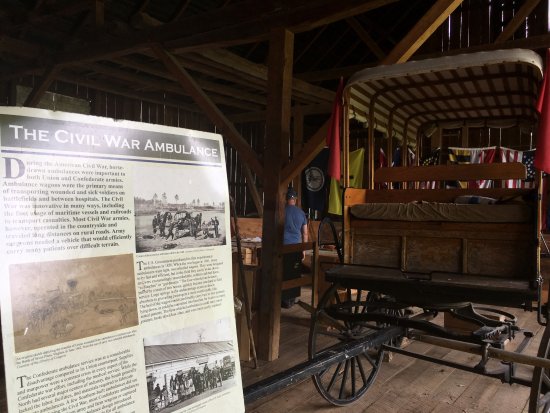

His more efficient treatment plan, while not perfect, was immensely successful and included the removal of 17,000 wounded soldiers within 24 hours of the battle. His plan proved necessary on the bloodiest day of the American Civil War: Antietam on September 17, 1862. He created and implemented the “Letterman Plan.” This plan included an organized ambulance corps, created standardization in medical tools and supplies at field dressing stations, it emphasized evacuations to field hospitals where emergency surgeries could take place, and also included larger hospitals away from the battlefield which had facilities for long-term care. His primary task: save as many soldiers from illness and injury as possible.

Often, soldiers were left in agony for days on the battlefield in various states of injury. Johnathan Letterman took up a post as the Union’s medical director. In June 1862, as the Army of the Potomac cobbled together forces, Maj. Many military medics continue on in civilian medicine, through service in emergency squads, hospitals, and clinics, and in so doing bring their military training with them creating a unique bond between battlefield medicine and civilian medical services.Īmerican Civil War (1861-1865) Formation of the Ambulance Corps & Pre-hospital Careīy the time the War Between the States broke out, Larrey had successfully demonstrated the importance of the flying ambulance corps in France. From transportation of the wounded in ancient battles to driving ambulances through heavy fire and across unknown terrain, and innovations in evacuation to instantaneous care on the frontline, medics are a crucial part of military success the world over.īattlefield Medicine to Civilian EMS looks at the influence military medicine has had on civilian pre-hospital care since the Napoleonic Era (c.1800), which generally marks the start of “modern” military medicine in ways we would recognize today and continues on a journey through major US conflicts over the past 150 years focusing on some of the most influential innovations that have crossed over to civilian EMS.Īs with each generation of soldiers, once one retires or discharges from military life – a new life in the civilian world waits. Our brothers and sisters in arms have made significant contributions to pre-hospital care since the dawn of civilization.


 0 kommentar(er)
0 kommentar(er)
